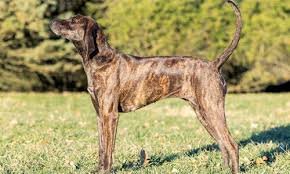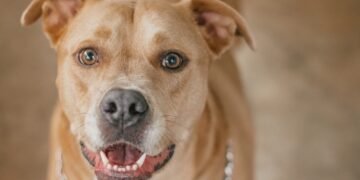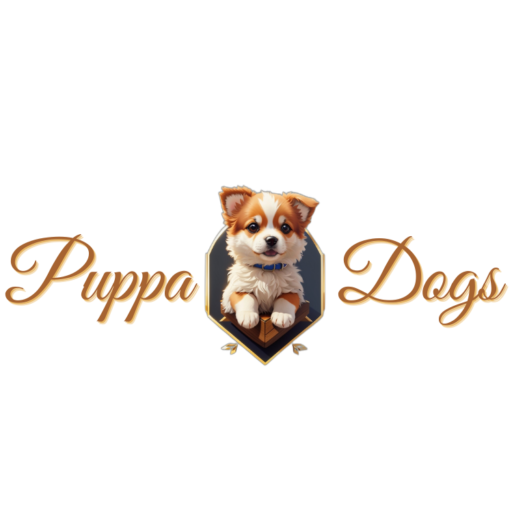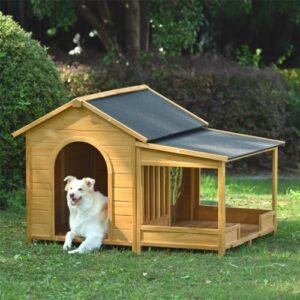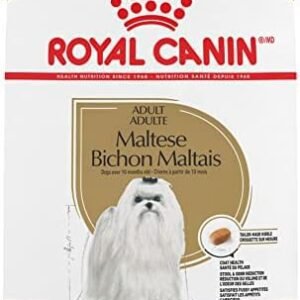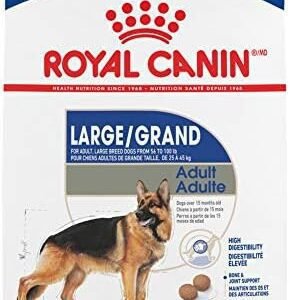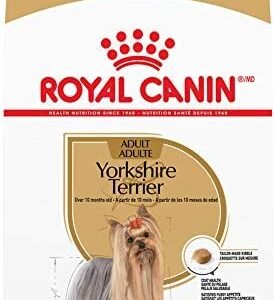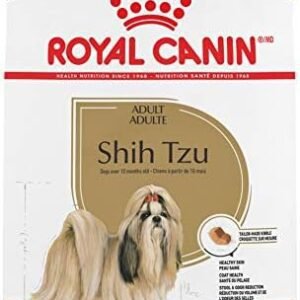As pet owners, we often find ourselves wondering whether it’s safe to share our meals with our furry companions. While dogs have their own specialized diets, many human foods can be safely enjoyed by them in moderation. However, not all human foods are suitable for dogs, and some can even be toxic. In this article, we’ll explore what human foods dogs can eat, which ones to avoid, and how to ensure your dog stays healthy while enjoying occasional treats.
Table of Contents
Understanding a Dog’s Diet: What Makes Food Safe or Unsafe?

Dogs are omnivores, meaning they can eat both plant-based and animal-based foods. However, their digestive systems differ significantly from ours. Some foods that are perfectly safe for humans can upset a dog’s stomach or cause serious health issues. Before sharing any human food with your dog, it’s essential to understand the nutritional needs of dogs and the potential risks involved.
Factors That Determine Safety
- Digestibility : Dogs may struggle to digest certain foods that humans process easily.
- Toxicity : Some foods contain compounds that are harmless to humans but toxic to dogs.
- Nutritional Balance : Even if a food is safe, overfeeding it can disrupt your dog’s balanced diet.
Human Foods Dogs Can Safely Enjoy
List of different human foods:
| Nutrient | Function | Sources |
|---|---|---|
| Carbohydrates | Provide energy and fibre | Whole grains, fruits, vegetables, legumes |
| Proteins | Build and repair body tissues | Meat, eggs, dairy, soy, beans, nuts |
| Fats | Provide energy and essential fatty acids | Oils, butter, nuts, seeds, fish, avocado |
| Vitamins | Support various metabolic processes | Fruits, vegetables, dairy, meat, eggs |
| Minerals | Regulate fluid balance, muscle contraction, nerve impulses, etc. | Dairy, meat, seafood, nuts, seeds, legumes |
| Water | Maintain hydration and body temperature | Water, beverages, fruits, vegetables |
Many human foods are not only safe for dogs but also provide additional nutrients. Here are some popular options:
Fruits and Vegetables
Apples (Without Seeds)
Apples are an excellent source of vitamins A and C and fiber. They make a great low-calorie snack for dogs. Just be sure to remove the seeds, as they contain cyanide, which is toxic to dogs.
Carrots
Carrots are rich in beta-carotene and fiber, making them a healthy treat. They’re also crunchy, which helps clean your dog’s teeth naturally.
Blueberries
These tiny berries are packed with antioxidants and vitamins. They’re a perfect snack for dogs of all sizes and can even support cognitive function in older dogs.
Sweet Potatoes
Cooked sweet potatoes are a great source of dietary fiber, vitamin A, and other essential nutrients. Make sure they’re plain and free of added sugars or spices.
Proteins
Cooked Chicken
Plain, cooked chicken is a staple in many homemade dog diets. It’s an excellent source of lean protein and can be used as a meal topper or training treat.
Eggs
Eggs are highly nutritious and provide protein, fatty acids, and essential vitamins. They should always be cooked thoroughly to avoid the risk of salmonella.
Peanut Butter (In Moderation)
Peanut butter is a favorite among dogs, but it should be given sparingly due to its high fat content. Always choose unsweetened, xylitol-free peanut butter.
Grains and Other Foods
Plain Rice
White or brown rice is easy to digest and often recommended for dogs with upset stomachs. It pairs well with boiled chicken for a bland diet during recovery.
Pumpkin (Plain, Canned)
Pumpkin is a natural remedy for digestive issues like diarrhea or constipation. Ensure it’s plain canned pumpkin, not pumpkin pie filling, which contains added sugars and spices.
Oatmeal
Oatmeal is a good option for dogs with wheat allergies. It’s rich in fiber and can help regulate digestion. Serve it plain and cooked without added sugar or flavorings.

Human Foods Dogs Should Avoid
While some human foods are safe, others can pose serious health risks. Below is a list of foods you should never feed your dog:
Toxic Foods
Chocolate
Chocolate contains theobromine and caffeine, both of which are toxic to dogs. Dark chocolate and baking chocolate are particularly dangerous.
Grapes and Raisins
Even small amounts of grapes or raisins can cause kidney failure in dogs. The exact toxin is unknown, so it’s best to avoid them entirely.
Onions and Garlic
These vegetables contain compounds that can damage a dog’s red blood cells, leading to anemia. This applies to all forms—raw, cooked, powdered, or dehydrated.
Harmful Ingredients
Xylitol
This artificial sweetener is commonly found in sugar-free gum, candy, and baked goods. Xylitol can cause a rapid insulin release in dogs, leading to hypoglycemia and liver failure.
Alcohol
Even small amounts of alcohol can be toxic to dogs, causing vomiting, diarrhea, difficulty breathing, and even death.
Avocado
While the flesh of an avocado isn’t highly toxic, the pit poses a choking hazard, and the persin compound in large quantities can upset a dog’s stomach.
High-Fat and Spicy Foods
Bacon and Fatty Meats
High-fat foods can lead to pancreatitis, a painful and potentially life-threatening condition in dogs.
Spicy or Seasoned Foods
Dogs don’t tolerate spices well, and spicy foods can irritate their digestive system. Avoid feeding them anything heavily seasoned.
What Are the Risks of Feeding Human Food to Dogs?
Feeding human food to dogs may seem like a harmless way to treat or bond with your pet, but it can come with several risks. While some human foods are safe for dogs in moderation, others can lead to serious health issues. Understanding these risks is essential for responsible pet ownership. Below, we’ll explore the potential dangers of feeding human food to dogs and how to mitigate them.
1. Toxicity Risks
Foods That Are Poisonous to Dogs
Certain human foods contain compounds that are toxic to dogs, even in small amounts. Feeding these foods can result in poisoning, which may require immediate veterinary intervention.
Chocolate
- Why It’s Dangerous : Chocolate contains theobromine and caffeine, both of which dogs metabolize slowly. These compounds can overstimulate the nervous system and heart.
- Symptoms : Vomiting, diarrhea, rapid breathing, seizures, and even death in severe cases.
- Prevention : Keep all chocolate products out of reach and never offer them as treats.
Grapes and Raisins
- Why It’s Dangerous : The exact toxin in grapes and raisins is unknown, but ingestion can lead to acute kidney failure.
- Symptoms : Vomiting, lethargy, loss of appetite, and dehydration.
- Prevention : Avoid feeding grapes or raisins entirely and ensure they’re not accessible to your dog.
Onions, Garlic, and Chives
- Why It’s Dangerous : These foods contain thiosulfates, which damage red blood cells and can cause anemia.
- Symptoms : Weakness, vomiting, difficulty breathing, and jaundice.
- Prevention : Avoid feeding any form of these vegetables, including powdered or cooked versions.
2. Digestive Upset
High-Fat Foods
Foods high in fat, such as bacon, fried chicken, or fatty cuts of meat, can upset a dog’s digestive system and lead to pancreatitis—a painful inflammation of the pancreas.
- Symptoms : Vomiting, diarrhea, abdominal pain, and loss of appetite.
- Prevention : Stick to lean proteins and avoid greasy or heavily processed foods.
Spicy or Seasoned Foods
Dogs have sensitive stomachs and cannot tolerate spices like chili powder, garlic powder, or excessive salt. Spicy foods can irritate their gastrointestinal tract and cause discomfort.
- Symptoms : Diarrhea, vomiting, and excessive thirst.
- Prevention : Always serve plain, unseasoned foods.
3. Choking Hazards
Some human foods pose a physical risk to dogs due to their size, shape, or texture. Hard or small foods can become lodged in a dog’s throat or cause damage to their teeth.
Bones
- Why It’s Dangerous : Cooked bones can splinter and cause choking, intestinal blockages, or internal injuries.
- Prevention : Opt for safer chew toys or raw bones specifically designed for dogs.
Nuts
- Why It’s Dangerous : Certain nuts, like macadamia nuts, are toxic to dogs. Others, like almonds, can be difficult to digest and pose a choking hazard.
- Prevention : Avoid feeding nuts altogether unless approved by your vet.
4. Obesity and Nutritional Imbalance
Excessive Treats
Feeding too many human foods can lead to weight gain and obesity, which increases the risk of conditions like diabetes, arthritis, and heart disease.
- Symptoms : Difficulty moving, panting, and reduced energy levels.
- Prevention : Limit treats to no more than 10% of your dog’s daily caloric intake.
Unbalanced Diet
Human foods often lack the specific nutrients dogs need to thrive. Over-reliance on table scraps can lead to deficiencies or imbalances in their diet.
- Symptoms : Poor coat condition, lethargy, and weakened immune system.
- Prevention : Use human foods as occasional supplements, not replacements for a balanced dog food diet.
5. Allergic Reactions
Just like humans, dogs can develop allergies to certain foods. Introducing new human foods without caution can trigger allergic reactions.
Common Allergens
- Dairy (e.g., cheese, milk)
- Wheat and gluten
- Certain proteins (e.g., beef, chicken)
Symptoms
- Itching, red skin, ear infections, and gastrointestinal upset.
- Prevention : Introduce new foods gradually and monitor for adverse reactions. Consult your vet if you suspect an allergy.
6. Artificial Additives and Sweeteners
Xylitol
This artificial sweetener is commonly found in sugar-free gum, candy, and baked goods. Even small amounts can cause a dangerous drop in blood sugar levels and liver failure in dogs.
- Symptoms : Vomiting, weakness, seizures, and collapse.
- Prevention : Check labels carefully and avoid products containing xylitol.
Artificial Colors and Preservatives
Many processed human foods contain additives that can irritate a dog’s digestive system or cause long-term health issues.
- Prevention : Stick to whole, natural foods and avoid highly processed options.
How to Minimize Risks
To safely incorporate human foods into your dog’s diet, follow these tips:
- Research First : Always verify whether a food is safe for dogs before offering it.
- Serve Plain : Avoid adding salt, sugar, spices, or sauces to human foods.
- Moderation is Key : Treats should make up no more than 10% of your dog’s daily calories.
- Monitor for Reactions : Watch for signs of digestive upset, allergies, or toxicity after introducing new foods.
- Consult Your Vet : If you’re unsure about a specific food, seek professional advice.
How to Introduce Human Food Safely
If you decide to share human food with your dog, follow these guidelines to ensure their safety:
- Start Small : Introduce new foods gradually and in small amounts to monitor for adverse reactions.
- Avoid Seasonings : Stick to plain, unseasoned foods to prevent digestive upset.
- Moderation is Key : Treats should make up no more than 10% of your dog’s daily caloric intake.
- Consult Your Vet : If you’re unsure about a specific food, consult your veterinarian for advice.
Feeding human food to your dog can be a fun and rewarding experience, but it’s important to do so in a way that prioritizes their health, safety, and enjoyment. By following a few simple guidelines, you can ensure that the experience is both safe and enjoyable for your furry friend. Here’s how to feed human food to your dog responsibly while making it more appealing and exciting for them.
1. Choose Safe and Nutritious Foods
The first step is selecting foods that are not only safe for dogs but also beneficial to their health. Dogs enjoy variety just like humans, so incorporating different textures, flavors, and nutrients can make mealtime more engaging.
Examples of Safe and Enjoyable Foods
- Fruits: Apples (without seeds), blueberries, bananas, and watermelon.
- Vegetables: Carrots, green beans, sweet potatoes, and pumpkin.
- Proteins: Plain cooked chicken, turkey, or boiled eggs.
- Grains: Plain rice, oatmeal, or plain pasta.
Tips for Variety
- Rotate between fruits, vegetables, and proteins to keep things interesting.
- Experiment with textures—some dogs love crunchy snacks like carrots, while others prefer softer options like mashed sweet potatoes.
2. Prepare Food in Dog-Friendly Ways
How you prepare the food can significantly impact its safety and appeal. Always avoid seasonings, oils, and spices that could upset your dog’s stomach.
Cooking Methods
- Steaming or Boiling: These methods preserve nutrients without adding fat or salt. For example, steamed green beans or boiled chicken are excellent choices.
- Baking: Bake plain sweet potato slices or homemade dog biscuits for a crunchy treat.
- Freezing: Freeze small portions of yogurt, peanut butter, or fruit puree in ice cube trays for a refreshing snack on hot days.
Avoid Harmful Preparations
- Never fry or heavily season foods.
- Avoid adding sugar, salt, garlic, onions, or artificial sweeteners like xylitol.
3. Portion Control and Moderation
Even safe foods can cause problems if fed in excessive amounts. Treats should make up no more than 10% of your dog’s daily caloric intake to prevent weight gain and nutritional imbalances.
Serving Sizes
- Small dogs: A teaspoon or two of human food as a treat.
- Medium dogs: A tablespoon or small handful.
- Large dogs: Up to a quarter cup, depending on their size and activity level.
Frequency
- Limit human food treats to once or twice a week to avoid overindulgence.
- Use human food as an occasional reward rather than a regular part of their diet.
4. Make It Fun with Creative Presentation
Dogs respond well to novelty, so presenting their treats in creative ways can make mealtime more enjoyable.
DIY Dog Treats
- Peanut Butter Pupsicles: Mix unsweetened peanut butter with plain yogurt and freeze in molds for a tasty frozen treat.
- Veggie Kabobs: Thread bite-sized pieces of carrot, cucumber, and apple onto a skewer for a colorful and crunchy snack.
- Pumpkin Bites: Combine canned pumpkin, oats, and a little water, then bake into small cookies.
Interactive Feeding
- Use puzzle toys or treat-dispensing toys to hide small pieces of human food. This encourages mental stimulation and makes eating more engaging.
- Scatter small pieces of safe fruits or veggies around the yard for a scavenger hunt-style game.
5. Incorporate Human Food into Their Regular Meals
If you’d like to include human food in your dog’s daily diet, do so thoughtfully by integrating it into their regular meals. This ensures they still receive a balanced diet while enjoying the added variety.
Meal Toppers
- Sprinkle a few blueberries or diced apples over their kibble.
- Add a spoonful of plain canned pumpkin or mashed sweet potato to their bowl for extra fiber and flavor.
Homemade Dog Food Recipes
If you’re interested in preparing homemade meals, consult your veterinarian or a canine nutritionist to ensure the recipes meet your dog’s dietary needs. For example:
- A mix of lean ground turkey, brown rice, and steamed green beans.
- A blend of boiled chicken, quinoa, and carrots.
6. Monitor Your Dog’s Reaction
Every dog is unique, and some may have sensitivities or allergies to certain foods. Always introduce new foods gradually and observe how your dog reacts.
Signs of Enjoyment
- Wagging tail, excited behavior, or eagerness to eat the food.
- Clean bowl after finishing their meal.
Signs of Discomfort
- Vomiting, diarrhea, or excessive gas.
- Lethargy or refusal to eat the food.
- Itching, redness, or swelling, which may indicate an allergic reaction.
If you notice any adverse reactions, stop feeding the food immediately and consult your veterinarian.
7. Involve Your Dog in the Process
Incorporating your dog into the preparation process can make the experience even more enjoyable for them. Letting them sniff ingredients or watch you prepare their food can build excitement and anticipation.
Safe Sniffing
- Allow your dog to sniff fruits or vegetables before cutting them up.
- Let them watch you mix ingredients for homemade treats (just ensure they don’t sneak a bite too early!).
Training Opportunities
- Use small pieces of human food as rewards during training sessions. For example, diced chicken or cheese can be great motivators for learning new commands.
8. Celebrate Special Occasions
Human food can be a wonderful way to celebrate milestones like birthdays, holidays, or adoption anniversaries. Create themed treats or meals to make the occasion memorable.
Birthday Cake for Dogs
- Use a base of whole wheat flour, mashed banana, and unsweetened applesauce.
- Frost with plain yogurt or cream cheese and decorate with dog-safe toppings like blueberries or carrot shavings.
Holiday Treats
- During fall, serve pumpkin-flavored treats.
- In summer, offer frozen watermelon chunks or pupsicles.
Conclusion: Balancing Treats and Nutrition
Sharing human food with your dog can be a fun way to bond, but it’s crucial to prioritize their health and safety. By sticking to safe options and avoiding toxic foods, you can ensure your dog enjoys occasional treats without compromising their well-being. Always remember that a balanced, species-appropriate diet is the foundation of your dog’s health, and treats should complement—not replace—it.
FAQs About Dogs Eating What Human Food
Can Dogs Eat Chocolate?
No, dogs should never consume chocolate. Chocolate contains substances like theobromine and caffeine, which are toxic to dogs. Even small amounts can lead to symptoms like vomiting, diarrhea, rapid breathing, increased heart rate, and, in severe cases, seizures or death. It’s crucial to keep all forms of chocolate, including cocoa powder and dark chocolate, out of your dog’s reach.
Are Fruits Safe for Dogs?
Many fruits are safe for dogs in moderation. Dog-friendly fruits include apples (without seeds), blueberries, watermelon (seedless), and bananas. These fruits offer vitamins and antioxidants. However, grapes and raisins should be strictly avoided as they can cause kidney failure in dogs.
Can Dogs Eat Nuts?
While some nuts are safe for dogs in small amounts, others are best avoided entirely. Peanuts, for example, are safe and often found in dog treats. However, macadamia nuts and walnuts can be toxic and lead to symptoms like weakness, vomiting, and tremors. Always check the specific type of nut before sharing it with your dog.
Is Garlic Safe for Dogs?
Garlic, along with onions, belongs to the allium family and is toxic to dogs. Even small amounts of garlic can lead to serious health issues, including damage to red blood cells and organ damage. Avoid giving your dog any foods seasoned with garlic, and be cautious about table scraps containing it.
Can Dogs Eat Spices?
Spices like garlic, onion, and salt are harmful to dogs and should be avoided. These seasonings can cause digestive issues, organ damage, or even poisoning. Stick to plain, unseasoned foods when sharing human food with your dog.
Is Cooked Meat Safe for Dogs?
Plain, cooked meat like chicken, turkey, or lean beef (without bones and seasoning) can be safe and nutritious for dogs. Avoid fatty meats and trim off excess fat as it can lead to pancreatitis. Cooked meat can be an excellent source of protein for your furry friend.
Can Dogs Eat Dairy Products?
Many dogs are lactose intolerant, meaning they lack the necessary enzyme to digest lactose in dairy products. While some dogs can handle small amounts of plain, unsweetened yogurt or cheese, it’s best to avoid milk and other dairy items. These can cause digestive upset, including diarrhea and gas.
Are Cooked Bones Safe for Dogs?
Cooked bones, especially from chicken or fish, should never be given to dogs. When cooked, bones can splinter and cause choking, blockages, or internal injuries. If you want to give your dog a bone, opt for raw bones specifically designed for dogs, under supervision.
Can Dogs Eat Human Baby Food?
Some baby foods are safe for dogs, but you must read the labels carefully. Choose baby foods without added salt, sugar, or seasonings. Plain, pureed vegetables like carrots or sweet potatoes can be suitable, but always check for harmful additives before offering it to your pet.
what to do if my dog eats something unsafe?
If you suspect your dog has ingested something toxic or unsafe, contact your veterinarian or an emergency animal hospital immediately. Do not wait for symptoms to appear, as quick action can be crucial in saving your dog’s life. Be prepared to provide information on what your dog ate, the quantity, and when it happened.

Dr. Rachel Davis is a passionate veterinarian, having completed her studies in veterinary medicine at the University of California. Alongside her professional commitments, she remains dedicated to her beloved dog and has a profound love for all animals. In her spare time, she indulges in her passion for writing, often focusing on topics related to veterinary care and animal welfare.



